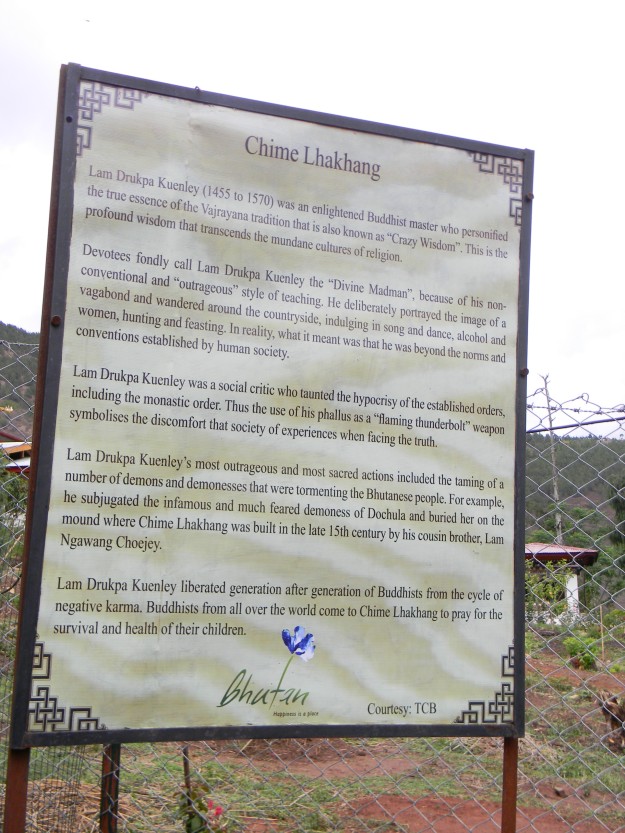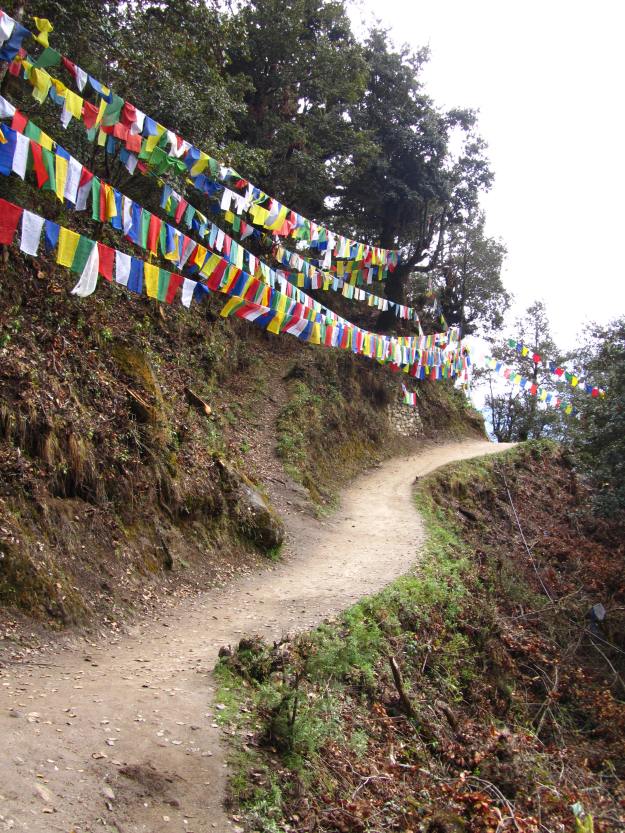Our journey from Paro to Thimphu was very relaxed and pleasurable. Firstly, the distance was minimal. Secondly, the day was clear and sunny.
Thimphu is just like any other capital city. Comparatively crowded than other Bhutanese towns, dirtier, and more chaotic. Precisely why I am never too keen on visiting any capital cities, but I can’t even completely give up on the idea because of the other benefits like more eating and socializing options. Additonally, visiting Thimphu is sort of mandatory as you need to get your 1 week permit extended and get additional permits to visit Punakha and Trongsa.
So anyway, there are definitely quite a few fun things you can do in Thimphu. Here’s what we visited.
Folk Heritage Museum
I quite liked this place. It is sort of a living museum where you see a traditional Bhutanese four floored house complete with traditional kitchen (the highlight for me). The kitchen had some great Suja (butter tea) churners and a flat noodle press. A woman was sitting in the courtyard roasting rice in a cauldron to make puffed rice (this is later served to you if you have lunch at the museum restaurant).
The traditional restaurant at the museum is excellent and offers a perfect introduction to most of the traditional Bhutanese dishes. It is also a very hearty meal. We somehow made the right decision to order only one set meal (they only have set meals) and the quantity was more than enough for three people.
The meal had kewa datshi, ema datshi, red boiled rice, suja, khuley (buckwheat pancakes, a specialty of Bumthang), hogay (a chilli, cucumber and cheese salad), pickle, chicken curry, pork curry, and a pumpkin datshi. Read more details here.

Trashi Chhoe Dzong
Each town has a dzong and the Bhutanese seem to be experts at selecting incredible locations even for government offices. This is a huge structure and the cars are parked very neatly outside the dzong entrance. You get to see the beautiful mountains even from the parking area. There’s a ceremony every evening to bring the national flag down. I am not a big fan of any ceremonies, but this one didn’t bother me as some other ceremonies do. Everything was just as neat and organized and calm as anything else.
 After the ceremony is over, tourists are not allowed inside for half an hour. So we just spent some time taking random pictures of each other.
After the ceremony is over, tourists are not allowed inside for half an hour. So we just spent some time taking random pictures of each other.

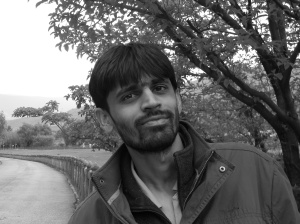
I liked the interior part of this dzong better than any other dzongs. The courtyard is massive and there’s enough space to hold national-level celebrations. You are not allowed to take pictures inside the main room, which has a shrine, but it also looks like a parliament house. Actually it looks more like a king’s main assembly. There are massive throne-like seats on a raised platform, and then rows of low seats. The high seats have framed pictures of the king.

National Library
The national library is a fine building built in the typical Bhutanese style. You don’t see much variety in the structures, but they all blend in very well with the natural surroundings. The library has 4 floors, and hosts the world’s biggest book. It’s about 68 kgs and 5 feet in height,
Buddha Statue
You can see the massive Buddha statue on the mountain from several places in Thimphu. It’s the world’s biggest brass statue of the Buddha. If you don’t have enough time, this is something you could skip. I’m personally not fond of wasting huge and beautiful places for statues.
Clock-tower Square
You will spot this happening square several times while you roam around Thimphu. It’s a huge area, like an amphitheater. Bhutan’s idol talent show is hosted here. There are little restaurants lining this square.

National Zoo
The national zoo is quite a nice reserve. There’s lots and lots of space for the animals to roam around. In fact it’s actually a huge forest with a fence. You spot the national animal Takin here. The takin looks like a combination of a goat and cow. It’s seems to be a friendly but incredibly slow animal. We also saw some antelopes and yaks here. All hanging out peacefully with each other.
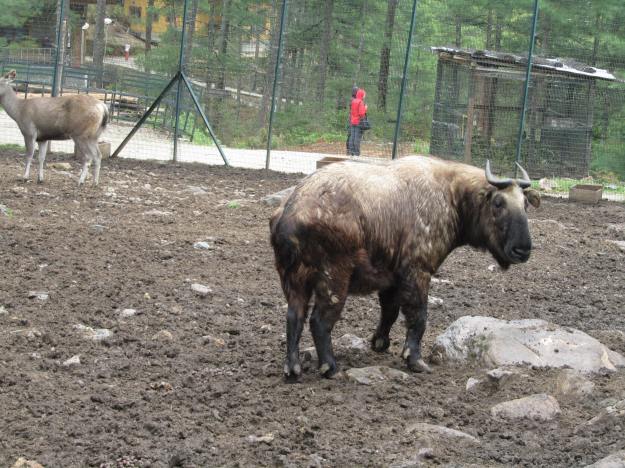 This being the birthing season, we were lucky to spot baby yaks, takins, and antelopes.
This being the birthing season, we were lucky to spot baby yaks, takins, and antelopes.
Weekend Market
The weekend market is a fabulous place to immerse into the daily life of the Bhutanese. It’s incredibly well organized into various sections like Local Produce, Organic Produce, Cold Storage, Doma and Paney (paan/ betel leaf with betel nut), Incense etc. It is also very clean. The weekend market is set on Friday and is active through Sunday. There is a great variety of fresh veggies, several variants of dried yak cheese, honey, pickles, dried fish, fruit etc.

It’s a great place for unexpected treasures. I found natural loofahs here. These are basically cucumbers that dry out on the creepers and become like sponge.

I was quite taken by the incense sections. There was a big selection of incense sticks. There were also sacks of various fragrant powders like dried juniper leaves, thyme etc. Apart from incense sticks, you’ll find these powders kept in bowls in most Bhutanese places, and a lit match stick is dropped into it. A light fragrance emanates. You can either buy one powder, make your own mix, or buy a pre-mixed blend.

There’s a foot bridge right opposite the market entrance. There’s another market right under this bridge. It has enticing selection of amulets, jewelry, prayer flags, handicrafts, and what not. But be prepared to bargain, or you’re sure to be taken for a ride with ridiculous prices.
 Trongsa, in central Bhutan, is again a dreamy, little town. A town so small that you can walk through all of it in a mere 10 minutes. It is about three hours drive from Phobjikha. The road after Phobjikha is beautiful. The scenery is out of this world.
Trongsa, in central Bhutan, is again a dreamy, little town. A town so small that you can walk through all of it in a mere 10 minutes. It is about three hours drive from Phobjikha. The road after Phobjikha is beautiful. The scenery is out of this world.  However, it feels like it’s taking for ever to reach. The mountains are densely covered with greenery and look like huge broccoli heads from the distance. The air gets cooler and fresher. You can see a stray, single house once in an hour or so. We had lunch at a lovely roadside hotel on our way. There aren’t many on this route, so it’s best to eat something when you get the chance.
However, it feels like it’s taking for ever to reach. The mountains are densely covered with greenery and look like huge broccoli heads from the distance. The air gets cooler and fresher. You can see a stray, single house once in an hour or so. We had lunch at a lovely roadside hotel on our way. There aren’t many on this route, so it’s best to eat something when you get the chance.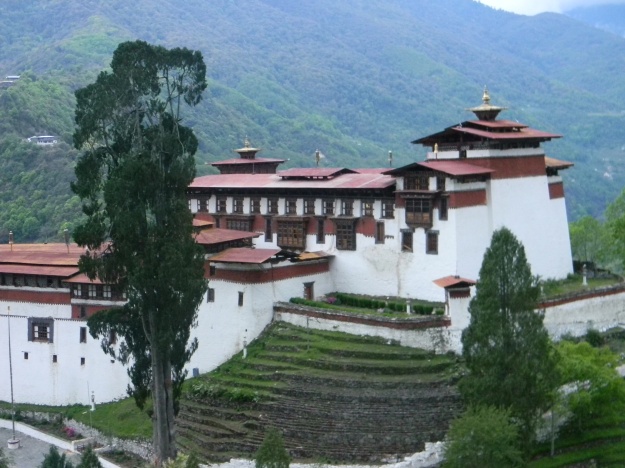
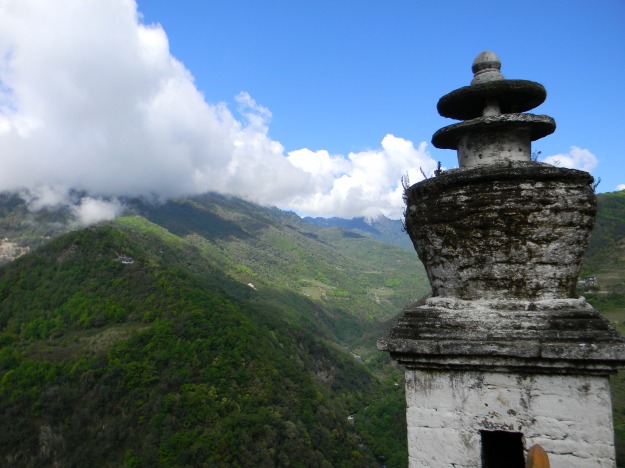 Despite the subliminal beauty, we had a looming melancholic day, mostly because it was pretty much the end of our journey. We had a long 9 hour journey to Thimphu ahead of us. And then, the next day, we’d be back on our way to Bagdogra. In any case, we started our journey home with a very strong resolve to return soon and explore Trongsa and then Bumthang.
Despite the subliminal beauty, we had a looming melancholic day, mostly because it was pretty much the end of our journey. We had a long 9 hour journey to Thimphu ahead of us. And then, the next day, we’d be back on our way to Bagdogra. In any case, we started our journey home with a very strong resolve to return soon and explore Trongsa and then Bumthang.







